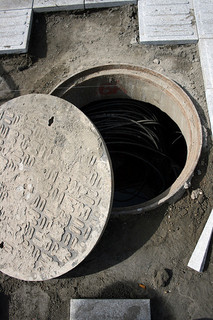Great story by Hal Dardick in today’s Tribune explaining the real reason the Lincoln Yards TIF had to be Rahm’d thru the City Council before the new Mayor took office. The area just barely qualified as a TIF, and pending new assessments were going to rise enough that it would no longer be eligible. According to the story, it’s uncertain whether the new Mayor could have stopped the project, but she settled for what appear to be minor concessions.
Of course, the whole idea behind TIF’s is that money can be pulled from general revenue into giant slush funds, which the Mayor (and others) can manipulate with little oversight. Meanwhile, there’s little left for routine maintenance, replacement of infrastructure and funding of government schools and other services. Which increases the “need” for TIF’s.
Dardick’s article goes into considerable detail, includes a link to a recent report by Lincoln Institute (no relation to Lincoln Yards, afaik). He does say “land” when I think he means “land + improvements.”
One counterfactual that Dardick doesn’t bother with: What would have happened if Joe Berrios was still Assessor? Would he have nudged down some values to keep the area eligible? Or, to look at it the other way, suppose the current Assessor, who appears to be more conscientious, had been in office since 2013. Perhaps the earlier figures would have been higher, so the increase would be less?
We’ll never know, and it shouldn’t matter. In a well-run city, TIF’s wouldn’t be needed, and a well-informed electorate wouldn’t tolerate them.

